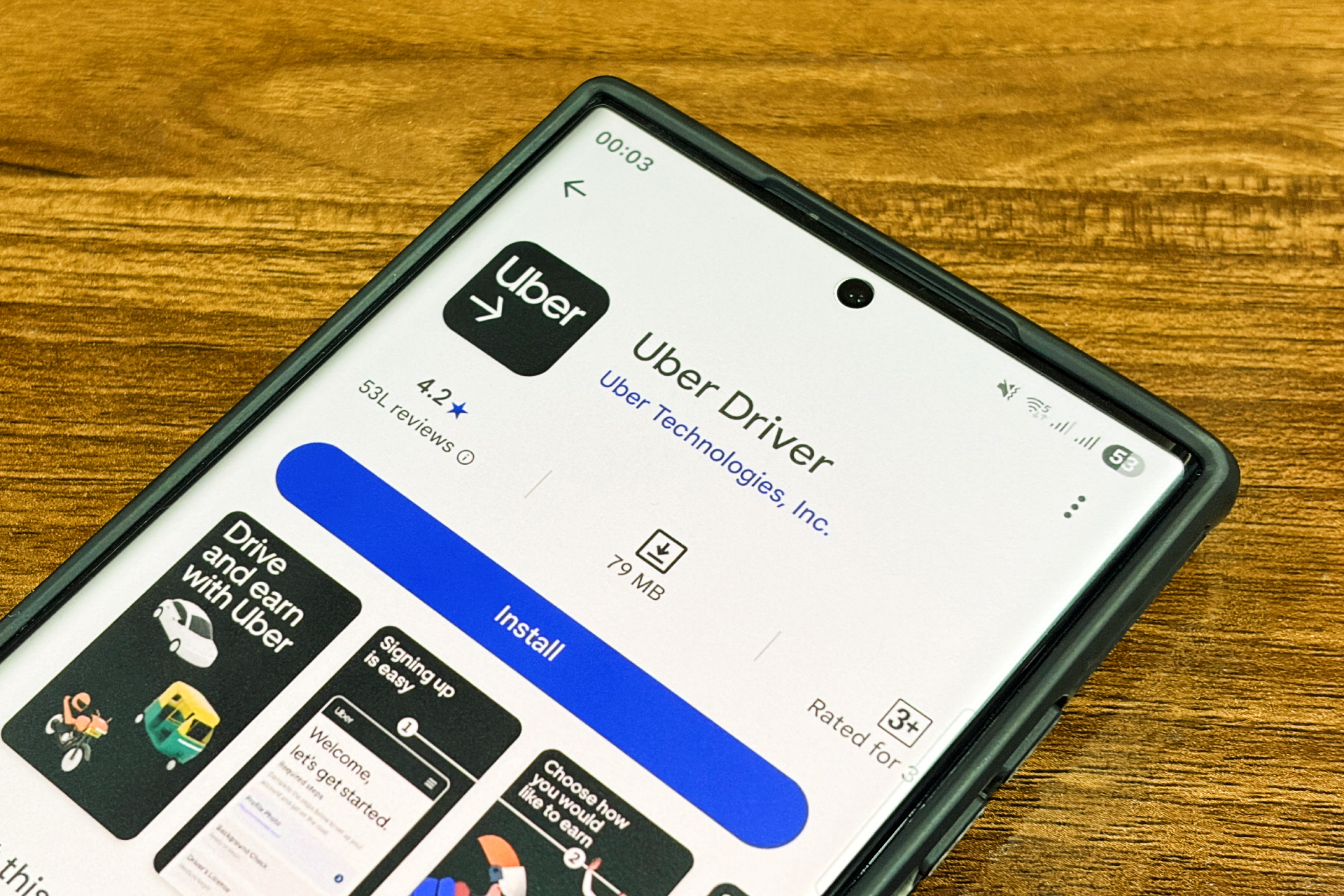
In a significant move aimed at bolstering safety and accountability within its vast ride-hailing network, Uber has initiated a phased pilot program in India, introducing an in-app video recording feature for its driver-partners. This strategic deployment, confirmed by the company, is designed to provide a crucial layer of protection for drivers and mitigate instances of misconduct, particularly in a market where the adoption of personal dashcams remains relatively low. The initiative marks a pivotal step in Uber’s ongoing efforts to leverage technology for improving the safety ecosystem for both drivers and riders.
Addressing Driver Vulnerabilities in the Gig Economy
The introduction of in-app video recording directly responds to persistent concerns voiced by driver-partners regarding their vulnerability to misconduct and false accusations from riders. Numerous drivers operating in major metropolitan areas, including the bustling Delhi-NCR region, have reported experiencing various forms of misbehavior from passengers. These incidents range from verbal abuse and harassment to explicit threats of lodging unfounded complaints against drivers, which can lead to severe repercussions such as financial penalties, temporary account suspensions, or even permanent deactivation from the platform. Such outcomes are particularly devastating for gig economy workers whose livelihoods are directly tied to their standing with ride-hailing companies.
One driver, speaking anonymously to protect their employment, highlighted a common predicament: "Even female passengers traveling late at night insist that we follow the route they want instead of what’s shown on the map. If we refuse, they threaten to file false complaints." This scenario underscores the delicate balance drivers must maintain between adhering to platform guidelines, ensuring passenger satisfaction, and protecting themselves from potentially damaging allegations. The fear of baseless complaints creates a climate of anxiety, impacting drivers’ ability to perform their duties without undue stress. For many, the ability to provide verifiable evidence through video footage could offer a much-needed safeguard against such threats, shifting the dynamic of dispute resolution towards a more evidence-based approach. However, a lingering skepticism remains among some drivers about whether Uber would consistently side with them in disputes, given the paramount importance of passenger retention in a competitive market.
A Broader Context: India’s Dynamic Ride-Hailing Landscape
India represents one of the most vital and fiercely contested markets for global ride-hailing giants like Uber. With a rapidly expanding urban population, increasing smartphone penetration, and a growing demand for convenient transportation solutions, the country has witnessed an explosion in the gig economy, with millions relying on platforms like Uber and its primary competitor, Ola, for income. The market is characterized by intense competition, price sensitivity, and a constant drive for service differentiation.
The sheer volume of daily rides, coupled with diverse socio-economic backgrounds of both drivers and riders, inevitably leads to a spectrum of interactions, some of which can escalate into disputes. While safety features for riders have historically been a primary focus for ride-hailing companies globally, the concerns of drivers have increasingly come to the forefront. In a country where public transportation infrastructure is still evolving in many areas, ride-hailing services play a critical role, but their widespread adoption also brings challenges related to safety, regulation, and the welfare of gig workers. The lack of standardized safety equipment, such as dashcams, among independent drivers further amplifies the need for platform-integrated solutions to address potential conflicts and ensure accountability.
Evolution of Safety Measures: A Global and Local Timeline
Uber’s journey to enhance safety features has been a continuous process, evolving with technological advancements and user feedback. Initially, safety provisions focused primarily on passenger tracking, emergency buttons, and driver background checks. The shift towards in-trip recording capabilities began with audio. In 2023, Uber launched an in-app audio recording feature in India, allowing drivers and riders to record conversations during trips, providing an initial layer of evidence for dispute resolution. This was a precursor to the more comprehensive video recording capability.
Globally, the video recording tool itself is not entirely new. Uber first piloted this feature in the United States in 2022, gathering crucial insights into its functionality, user acceptance, and technical requirements. Following successful trials and refinements, the feature was subsequently rolled out in other key international markets, including Canada and Brazil, before its current introduction in India. This phased global rollout demonstrates Uber’s cautious approach, adapting the technology and its implementation strategy to suit regional legal frameworks, cultural norms, and user expectations. The expansion into India underscores the significant importance of this market to Uber’s global strategy and its commitment to addressing local safety challenges with globally tested solutions.
The pilot program in India commenced its rollout in May and is now actively operational in ten major cities: Delhi, Mumbai, Bengaluru, Chennai, Pune, Hyderabad, Chandigarh, Kolkata, Jaipur, and Lucknow. These cities represent a diverse cross-section of India’s urban landscape, encompassing financial hubs, IT centers, cultural capitals, and growing metropolitan areas, providing a comprehensive testing ground for the feature’s effectiveness and impact.
Privacy Concerns and Robust Data Safeguards
The deployment of in-app video recording, while offering potential safety benefits, naturally raises significant privacy concerns for both drivers and riders. The prospect of being continuously recorded during a private interaction within a vehicle can be unsettling for many. Acknowledging these sensitivities, Uber has implemented stringent safeguards designed to protect user privacy and ensure responsible data handling.
Critically, all recordings made through the in-app feature are double-encrypted, ensuring that the content remains secure from unauthorized access. These encrypted files are stored directly on the driver’s device, not on Uber’s servers. This on-device storage mechanism is a key privacy-enhancing design choice, meaning that neither Uber nor any third party can access the recordings unless a user—either the driver or, in specific contexts, a rider—chooses to share them as part of an official safety report or dispute resolution process. Furthermore, to prevent indefinite data retention and mitigate the risk of data misuse, all recordings are automatically deleted from the device after a period of one week if they are not actively shared in connection with a safety incident.
Transparency is another cornerstone of the implementation. When the in-app video recording is active during a trip, riders receive an explicit in-trip notification, ensuring they are aware that the recording is taking place. This notification serves as a form of consent and allows riders to make informed decisions about their interactions during the journey. These measures are crucial, especially in India, which recently enacted the Digital Personal Data Protection Act, 2023, signaling a stronger regulatory environment for data privacy. Uber’s approach aligns with principles of data minimization and purpose limitation, collecting and retaining data only when necessary for stated safety purposes and with clear user awareness.
Market Dynamics and Competitive Pressures
The introduction of this video recording feature could have ripple effects across the Indian ride-hailing market. Competitors, most notably Ola, will likely be observing the pilot’s outcome closely. If the feature proves effective in enhancing driver safety and reducing disputes without significant backlash from riders regarding privacy, it could set a new industry standard. Competitors might feel pressure to develop similar features to avoid being perceived as less safe or less supportive of their driver-partners. Conversely, if privacy concerns outweigh perceived safety benefits, or if implementation proves challenging, competitors might choose to differentiate themselves through other means.
The social and cultural impact in India will also be significant. While safety is a universal concern, the specific nuances of personal space, interaction norms, and privacy expectations vary. The balance between deterring misconduct and maintaining a comfortable, private environment within a vehicle will be delicate. The feature’s success will depend heavily on its ability to genuinely make drivers feel safer and more secure, thereby improving their overall experience and retention, without alienating a substantial portion of the rider base.
The Road Ahead: Balancing Innovation and Trust
As the pilot expands and gathers data from diverse urban environments, Uber will face the critical task of analyzing its efficacy. Key metrics will likely include the reduction in reported misconduct incidents, the number of recordings submitted for dispute resolution, and feedback from both drivers and riders regarding their perceptions of safety and privacy. The performance of this pilot in the coming months will be instrumental in shaping Uber’s decision on whether to extend the feature nationwide across India or potentially to other global markets where similar challenges exist.
The broader implications extend beyond immediate safety. This initiative reflects a growing trend in the gig economy to use technology to mediate and regulate interactions between service providers and consumers. While offering clear benefits in terms of accountability and evidence, it also raises fundamental questions about the nature of surveillance in public and quasi-private spaces, the rights of gig workers, and the responsibilities of platform companies. Uber’s success in navigating these complex ethical and practical considerations will not only determine the future of in-app video recording but also set a precedent for how technology continues to reshape the landscape of personal safety and trust in the rapidly evolving digital economy. The ultimate goal for Uber remains to cultivate an environment where both drivers and riders feel secure and respected, a challenge that requires continuous innovation and a deep understanding of human behavior in a technologically mediated world.





